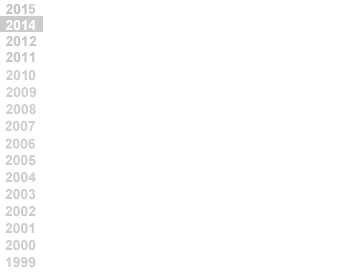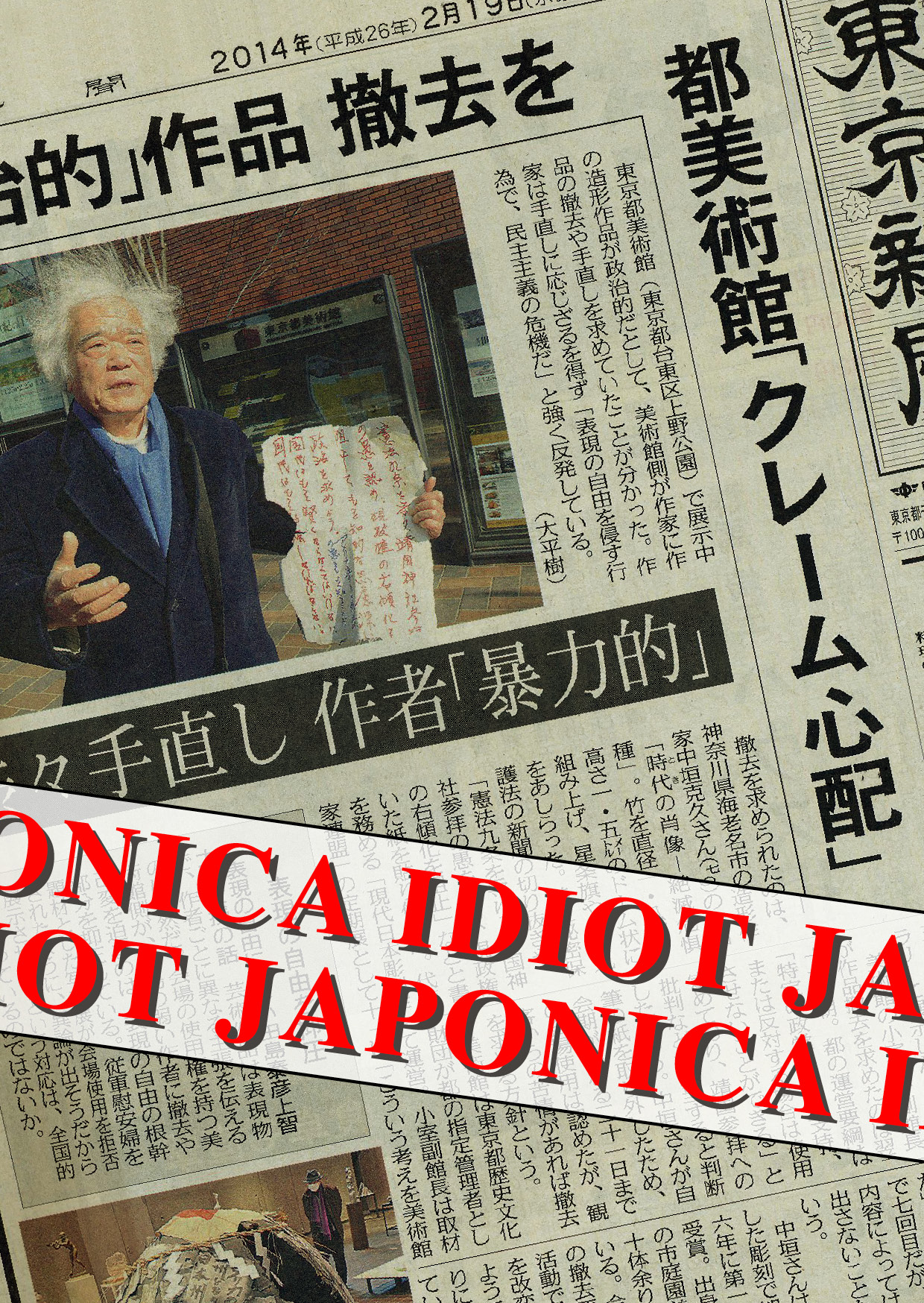
|
|
  
The incident at Tokyo Metropolitan Art Museum
In February 2014, Katsuhisa Nakagaki showed his work "Portrait of the Period - Endangered species idiot JAPONICA - Round barrow" at Tokyo Metropolitan Art Museum in Ueno as part of a group exhibition.
By order of the museum a hand-written note had to be removed which referred critically to the prime ministers visit to the controversial Yasukuni Shrine in December 2013. In this shrine, class-A war criminals of the pacific war are worshipped along other war fighters. Among them are also foreign nation fighters, who were forced to fight on the side of Japan, even if surviving family members opposed their enshrinement and worship along war criminals. The prime ministers visits have repeatedly caused international public outrage. Fearing complaints, the museum prevented Nakagaki from showing the piece in its complete form.
In order to stimulate public discussion on art censorship Katsuhisa Nakagaki then turned to the media and made the incident public. In protest, he emphasized his right to deal with his fellow-countrymens view on national history, notably war history, in his works.
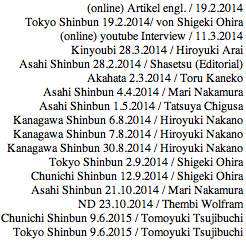
|
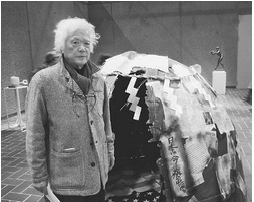
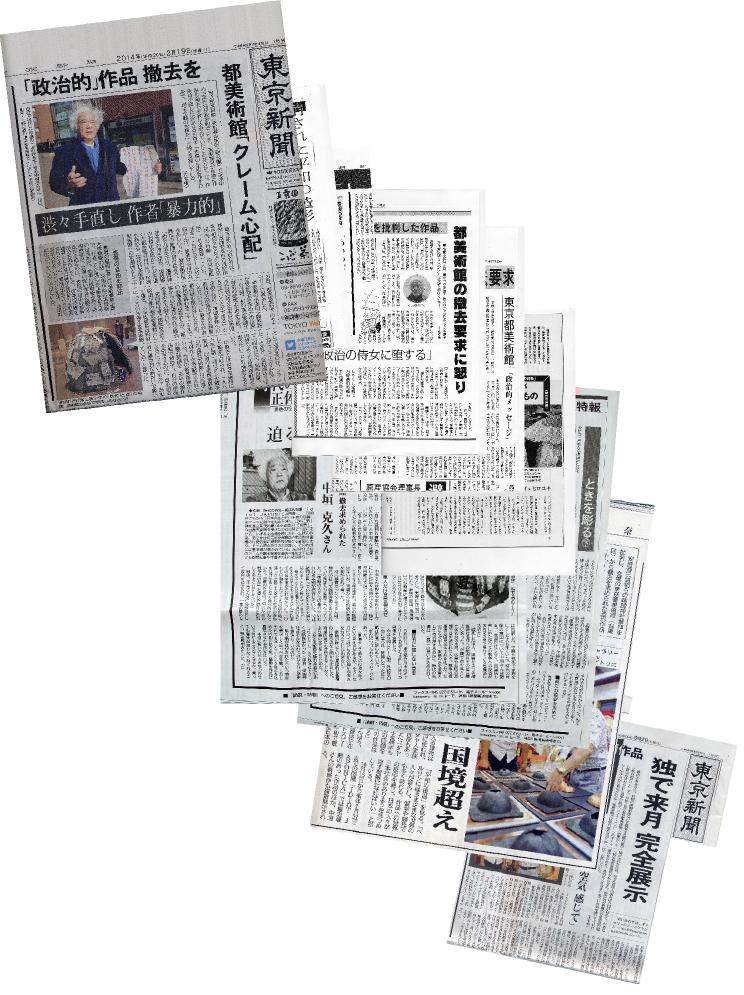
 (7) (7)  (2) (2)  (16) (16) |
  
Exhibition in Berlin
October 23, 2014 - January 31, 2015
The work "Portrait of the Period - Endangered species idiot JAPONICA - Round barrow", which could not be displayed in its complete form in Tokyo, is now shown at the Gallery Murata & Friends in its entirety.
The exhibition also features those parts of the art work, which had to be removed on order of the museum in Tokyo.
The piece takes the shape of an ancient kofun burial mound. Build on a bamboo structure, its surface is made of cardboard and forms the shape of a hemisphere of 2 x 2 meters. A Japanese ensign, copies of newspaper articles and hand-written notes are mounted on top. The interior is colored black with a US banner spread on the floor.
The works hand-written texts have been translated into German for the exhibition in Berlin. The texts, along with German translations of the newspaper articles have been mounted on the gallerys walls.
Doing so, the crucial flyer-like character of the work is additionally highlighted. |
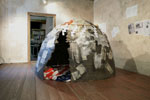 |
  
Exhibition at the nGbK Berlin
April 18 - June 14 2015
With: Chieh-jen CHEN, Ching-Yao CHEN, Sung-dam HONG, Katsuhisa NAKAGAKI, Sunmu, Taeko TOMIYAMA
In the international view, Japan, South Korea and Taiwan are considered to be democratic states governed by the rule of law, not least because they acquired this title during the Cold War. There is, however, only limited recognition of the fact that in all three countries the state does not view freedom of expression as an inalienable right and that the monitoring or censorship of critical art and repressive measures taken against awkwardly critical artists are not uncommon. The reasons for this are deep-rooted and entrenched - in Japan the failure to come to terms with the imperial past and the taboos surrounding the person of the Emperor, in South Korea the adversarial stance towards North Korea, and in Taiwan the states ideological rivalry with the Peoples Republic of China.
The exhibition Verbotene Bilder presents works whose aesthetic ambiguities are not only a provocation to this schematic opposition in East Asian consciousness but also relativize the artistic and art-historic perception for Western eyes, which have adopted the over-simplified polarizations.
Invitations were extended to two artists from each of the three countries, Japan, Korea and Taiwan. The chosen artists all have a critical stance on the politics and taboos of their respective countries, are concerned for freedom of expression, human rights and coming to terms with the sensitive issues of the past, and do not shy away from the social and political conclusions inherent in their work.
|
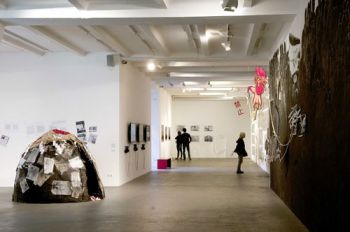 |
|



